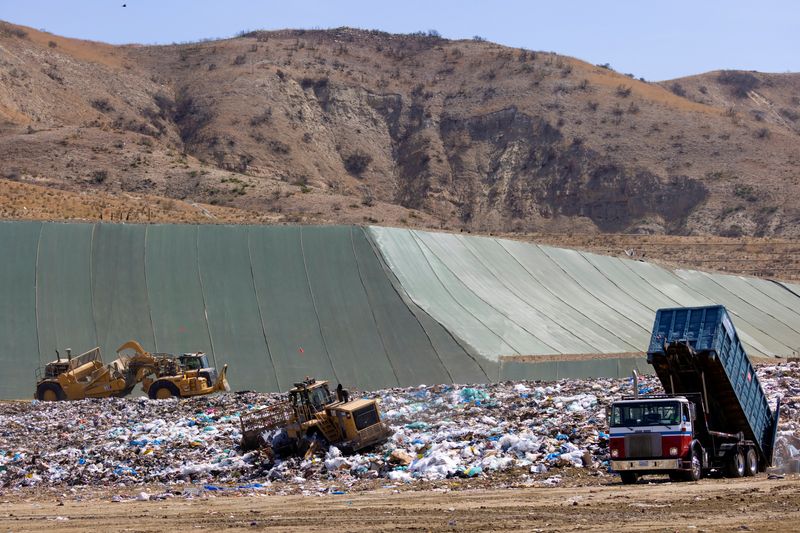By Valerie Volcovici
WASHINGTON (Reuters) – More than half of U.S. landfills observed by aerial surveys are super-emitters of methane, according to a new study published on Thursday in the journal Science.
The study represents the largest assessment to date of methane from landfills, the third-largest source of methane emissions in the United States, and suggests an opportunity to address climate change by targeting a prevalent and potent greenhouse gas.
It was led by the Carbon Mapper research team, with researchers from NASA’s Jet Propulsion Laboratory, Arizona State University, the University of Arizona, Scientific Aviation and the Environmental Protection Agency.
About 52% of landfills had observable methane emission sources, compared to 0.2-1% of “super-emitting” sites in the oil and gas sector, the largest source of methane in the United States.
According to the EPA, superemitters are sources that emit at least 100 kilograms (100 pounds) of methane per hour.
At large-emitting landfills, 60% had methane leaks that persisted for months or years, while most leaks at super-emission sites in the oil and gas sector were “short-lived events,” the study said.
Dan Cusworth, a Carbon Mapper scientist and lead author of the study, said identifying these leaks offers a quick way to target emissions.
“Addressing these elevated methane sources and mitigating persistent emissions from landfills offers strong potential for climate benefit,” he said in a statement.
So far, oil and gas has been the primary focus of emerging regulations and voluntary programs in the United States, Europe and elsewhere.
But as more aerial and satellite surveys are launched, regulators will be able to measure, quantify and act on methane from landfills.
To date, companies and regulators have relied on model-based estimates of landfill emissions, as well as surveys with portable methane sensors, which provide a less complete picture, the study says.

The EPA’s greenhouse gas reporting system underestimated the extent of methane leaks in landfills, the study found. Aerial surveys showed that emission rates were 1.4 times higher than EPA estimates.
The EPA said that in 2021, 12% of all U.S. greenhouse gas emissions from human activities came from methane.